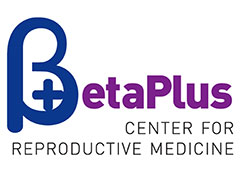In 2020, we started 503 cycles of those 279 IVF/ICSI, 162 FET, and 62 AIH procedures.
This year, we had 173 biochemical pregnancies from 503 started cycles, which gives success rate of 34.4% for any cycle started in our clinic. In ART procedures were women between 19 and 45 years. The youngest patient who was pregnant was 19 years old, and the oldest was 45. Currently, we have 115 ongoing pregnancies.
In 2020 there were in total of 83 deliveries with 90 babies born.
IVF/ICSI
We had started 279 fresh IVF/ICSI cycles. In 11 we quit the cycle before aspiration, in 4 patients because of COVID-19 positive test, and in others due to the poor response to the therapy.
In 51 cycles there was no embryo transfer. In 40 patients that underwent oocyte retrieval, embryo transfer was not performed because of the following reasons: negative aspiration (8), poor oocyte quality (2), no fertilization (8), embryo development arrest (1), inability to pass the cervical canal (1), and in 18 patients “freeze all” was performed mostly due to the prevention of ovarian hyperstimulation syndrome (OHSS). The remaining two patients had to be referred to another institution, where oocyte retrieval and embryo transfer were performed.
In the fresh cycle, 228 embryo transfers were performed, of those 43 (18.8%) embryos were transferred on day 5 (blastocyst stage). The lower percentage of cycles with blastocyst stage embryo transfer was due to the pandemic because we wanted to reduce the risk of COVID-19 infection while the patients waited for transfer. Our approach was successful since none of the patients was infected with COVID-19 while waiting for pregnancy test results, according to the data we have.
In total 85 pregnancies were achieved (which gives a success rate of 37.3% by fresh embryo transfer). The success rate for blastocyst transfer was 41.9% (18/43). In 116 cycles, the single embryo was transferred, with resulting pregnancy in 45 women (38.8%); in 108 cycles two embryos were transferred and pregnancy was achieved in 40 women (37.03%), while in 4 cycles, three embryos were transferred with no pregnancies.
Of 279 cycles started for IVF/ICSI procedure, in 205 cycles standard ovarian stimulation protocol was used (full stimulation). In these 205 cycles, ET was performed in 167 cycles, which resulted in 66 pregnancies (success rate of 39.5% per embryo transfer). There were 71 cycles started with mild ovarian stimulation, and ET was performed in 60 cycles. There were 19 pregnancies in cycles with mild stimulation, which gives a success rate of 31.7% per embryo transfer. IVF/ICSI was started in 3 natural cycles, embryo transfer was performed only in 1 and it did not result in pregnancy.
Due to the intraabdominal bleeding during the IVF/ICSI procedure, 1 patient was hospitalized. The bleeding stopped spontaneously, and patients recovered well after 1 day of hospitalization.
Frozen embryo transfer (FET)
In 2020 we started 162 FET procedures, and 161 were performed. In one patient, FET was not performed due to bleeding on the day of transfer.
Out of 161 FET procedures, in 156 cycles blastocysts were transferred, and in 5 cycles day-3 embryos were transferred. Pregnancy was achieved in 79 cryo embryo transfers (success rate 50.6%), where 67 pregnancies were from stimulated cycles and 12 were in natural cycles. We mostly performed transfer in stimulated cycles because the risk of giving up was lower. We had pregnancies after 58 cryo embryo transfers of a single blastocyst and after 21 cryo embryo transfers of 2 blastocysts. Because the complication risks are lower in singleton pregnancies, in younger patients we usually suggest cryopreservation of a single blastocyst on one carrier (Cryotop).
There were no pregnancies in FET procedures with day-3 embryos.
Insemination (AIH)
In 2020 we performed 62 inseminations in total, 7 in natural cycle and 55 in stimulated. Since anovulation is a frequent indication for insemination, we mostly perform insemination in the simulated cycle. Nine pregnancies were achieved in women aged between 29 and 40, giving a success rate of 14.5%.
Twin pregnancies
In 2020, there were 8 twin pregnancies (4.62% out of a total number of pregnancies), 4 after a fresh IVF/ICSI cycle, and 4 after FET. Inseminations did not result in twin pregnancies.




